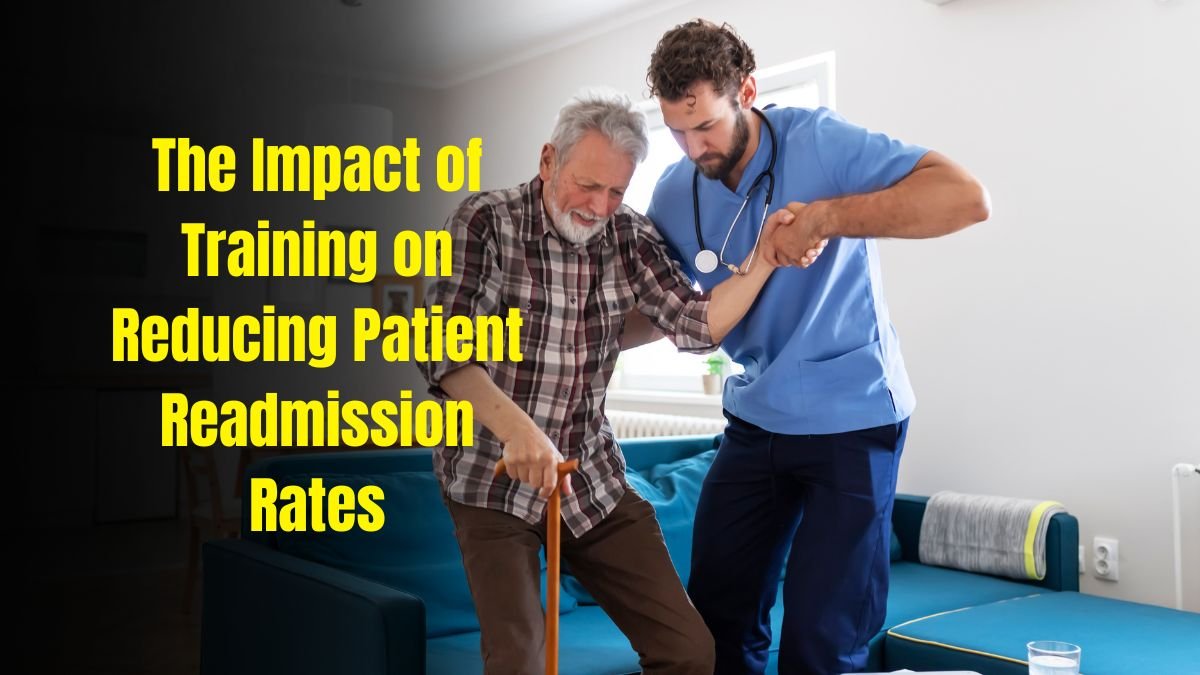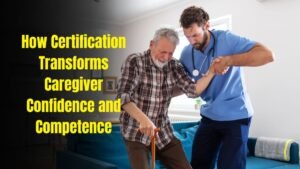Hospital readmissions are expensive, disruptive for patients, and increasingly tied to reimbursement. In 2025, the evidence is clear: targeted, well-designed training—from discharge education and medication reconciliation to nurse-led transitional care, pharmacist-led follow-up, and team-based simulation—can meaningfully reduce 30-day returns to the hospital.
Below is the latest, real-world, data-driven view of what works now, how much impact to expect, and how to build a training program that moves your metrics.
Why Readmission Reduction Still Matters In 2025
- Financial exposure is ongoing. CMS’s Hospital Readmissions Reduction Program (HRRP) continues to reduce Medicare base payments for hospitals with excess 30-day readmissions; the maximum penalty remains 3% of base DRG payments in FY2025.
- Penalties are widespread. In FY2025, about 7% of hospitals received a ≥1% penalty; for FY2026 (starting Oct. 1, 2025), the distribution of penalties shifts, with 21.8% of hospitals seeing no penalties and ~70% facing <1%—a reminder that nearly four out of five hospitals still have money at risk.
- Patient safety imperative. Nearly 1 in 5 patients experiences an adverse event within three weeks of discharge, much of which is preventable—with adverse drug events the most common. High-quality training aims precisely at these failure modes.
The Evidence: Training Interventions That Lower Readmissions
1) Pharmacist-Led Medication Reconciliation + Counseling
What it is: Structured medication reconciliation (MedRec) at discharge, patient counseling, and post-discharge follow-up calls focused on adherence and red-flag symptom review.
Impact (latest): Reviews and trials in 2024–2025 show consistent reductions in 30-day readmissions when pharmacists lead MedRec paired with counseling and follow-up. One 2025 analysis in older adults reported a 26% lower risk of 30-day readmission with pharmacist-led transitional care.Central+1
Why it works: It targets the most common post-discharge harm—medication error or confusion—closing gaps with patient-friendly instruction and rapid access to a knowledgeable clinician.
2) Nurse-Led Transitional Care (NLTC)
What it is: Structured discharge planning, teach-back education, early follow-up, home or telehealth visits, and coordinated communication with primary care.
Impact (latest): A 2025 review found nurse-led transitional care reduces readmissions and ED visits and improves quality of life after discharge across adult populations.
Why it works: Nurses standardize discharge education, reinforce self-management skills, and ensure a warm handoff to ambulatory teams.
3) Teach-Back Discharge Education
What it is: Patients repeat back key instructions (medications, warning signs, follow-ups) to confirm understanding; staff retrain until comprehension is demonstrated.
Impact: Teach-back has repeatedly been linked to lower readmissions in discharge education programs; newer syntheses continue to support meaningful reductions, particularly in heart failure and other high-risk groups.
Why it works: It attacks health literacy gaps, a common root cause of poor post-discharge adherence.
4) Early Post-Discharge Follow-Up
What it is: Scheduling and completing an outpatient visit or telehealth check within 7 days (or even 3–5 days) of discharge, often coupled with symptom-specific education.
Impact (latest): 2024 evidence shows early follow-up is effective for heart failure and stroke populations in reducing 30-day all-cause readmissions; impact for COPD and AMI is less certain, underscoring the need for condition-specific pathways.
5) Team-Based Safety & Simulation Training
What it is: Multidisciplinary training that strengthens teamwork, situational awareness, escalation, and workflow reliability—often using simulation.
Impact (latest): AHRQ’s 2025 patient safety highlights note that education/training was a central approach across funded projects and improved teamwork and safety culture, both linked to better transitions and fewer avoidable returns.
6) Digital/EHR-Supported Transitions
What it is: EHR prompts, shared care plans, and digital tools that pair patient education (often tablet-based) with clinician dashboards and risk flags.
Impact (latest): 2025 work in JAMA Network Open describes EHR-enabled, education-centric workflows for heart failure that lower readmission risk in pragmatic settings, reinforcing the value of tech-augmented training rather than tech alone.
What Magnitude Of Improvement Should Hospitals Expect?
Recent summaries show training-anchored transitional care programs commonly drive absolute readmission reductions of 1–3 percentage points in targeted populations, with relative reductions ranging 10–30% when the right bundle (MedRec + teach-back + early follow-up) is implemented with fidelity.
Pharmacist-led programs are among the strongest single-discipline levers, with ~26% lower 30-day risk observed in 2025 analyses of older adults.
Even at small percentage-point gains, organizations reduce exposure to HRRP penalties (capped at 3%), protect DRG revenue, and improve patient experience and safety—results that often exceed the cost of building the training.
The 2025 Training Blueprint: A Practical, Step-By-Step Guide
- Stratify Risk by Condition and Social Needs
Use EHR risk models to flag patients with heart failure, stroke, complex polypharmacy, limited health literacy, or social instability. Tailor training to the cohort. - Standardize Discharge Education With Teach-Back
Build condition-specific scripts, your hospital’s teach-back checklist, and short visual aids. Audit comprehension rather than delivery. - Embed Pharmacist-Led MedRec + Counseling
Require pharmacist review of reconciled meds for high-risk patients; schedule a 48–72-hour post-discharge call to catch side effects, duplications, and dose errors early. - Guarantee Early Follow-Up
Hard-stop discharge until a visit within 7 days is scheduled (virtual acceptable). Provide escalation instructions and direct lines for symptom worsening. - Train For Teamwork & Escalation
Run brief simulation scenarios on handoffs, weekend discharges, and language barriers. Capture defects; update protocols. - Close the Loop With Primary Care & Home Health
Share reconciled med lists, pending tests, and teach-back summaries through your EHR. Clarify who calls the patient and when. - Measure What You Train
Track 30-day all-cause readmissions, condition-specific readmissions, ED revisits, and call completion rates. Review cases within 72 hours to identify training gaps.
At-A-Glance: Training Interventions And Measured Impact (2024–2025)
| Training Intervention | Audience | Core Tactics | Latest Reported Impact on 30-Day Readmissions | Notes |
|---|---|---|---|---|
| Pharmacist-Led MedRec + Counseling + Follow-Up | Pharmacists, discharge RNs | Reconcile meds; counsel with plain language; follow-up call at 48–72 hrs | ≈26% lower risk of 30-day readmission in older adults; consistent reductions across reviews | Strongest single-discipline lever; aligns with adverse drug event prevention. |
| Nurse-Led Transitional Care (NLTC) | Transitional RNs, case managers | Teach-back, early follow-up, home/tele visits, warm handoff | Lower readmissions and ED visits; better QOL | Works across adult populations; standardize tools and checklists. |
| Teach-Back Discharge Education | Bedside RNs, educators | Patients “teach back” meds, red flags, follow-ups | Reduced readmissions in multiple conditions (notably HF) | Low-cost, high-yield; requires coaching and audit. |
| Early Post-Discharge Follow-Up (≤7 days) | Ambulatory teams, telehealth | Visit scheduling before discharge; symptom protocols | Effective for HF and stroke; mixed for COPD; limited for AMI | Pair with teach-back and MedRec for best results. |
| Team-Based Safety & Simulation | Multidisciplinary teams | Simulation, escalation drills, workflow redesign | Improved teamwork/safety culture, supporting lower returns | Targets process failures at transitions. |
| EHR-Enabled Education & Monitoring | Clinicians + patients | Tablet modules, risk flags, shared care plans | Reduced readmission risk in pragmatic HF settings | Tech augments training; it’s not a substitute. |
Building Staff Competence: How To Train (And Retrain) For Reliability
- Micro-learning + Simulation: Short, focused modules on teach-back scripting, MedRec pitfalls, and warning-sign coaching, followed by 10-minute simulations and rapid feedback.
- Competency Check-Offs: Annual sign-offs for discharge education and MedRec; spot audits using standardized rubrics.
- Shadowing & Peer Coaching: Pharmacists observe nurse teaching; nurses observe pharmacist counseling to align messaging.
- Equity-Centered Training: Teach culturally sensitive communication, interpreter use, and literacy-level customization so every patient can act on discharge plans.
- Hardwiring Behaviors in the EHR: Smart phrases for red-flag education, auto-tasks for post-discharge calls, and discharge “do-not-complete” checks until follow-up is scheduled.
Finance & Policy Context Hospitals Should Track
- HRRP mechanics remain unchanged in 2025, with penalties applied across all base operating DRGs and capped at 3%; performance periods roll forward annually.
- Penalty landscape: FY2025 and FY2026 distributions show many organizations still at risk, reinforcing the ROI of training-driven transition programs.
- State models: Some all-payer systems (e.g., Maryland’s RRIP) tie up to 2% of inpatient revenue to readmission performance, further raising stakes.
Implementation Pitfalls (And How To Avoid Them)
- Training without measurement. Tie every module to a metric (e.g., teach-back completion rate, 48–72 hr call completion, 7-day visit completion).
- Doing one intervention in isolation. The strongest results come from bundles: teach-back + MedRec + early follow-up.
- Assuming digital tools replace training. EHR prompts help, but staff skill in educating patients and closing loops is decisive.
- Ignoring literacy and language. Use plain language, visuals, and certified interpreters; audit comprehension—not delivery.
Case-Mix Targeting: Where Training Pays Off Most
- Heart Failure (HF): Strongest evidence for early follow-up, teach-back, and pharmacist-led interventions.
- Stroke: Early follow-up and self-management education are effective; ensure caregiver training for home routines.
- Polypharmacy/Elderly: Pharmacist-led transitional care shows meaningful reductions in readmissions and medication complexity.
A 90-Day Action Plan For Hospitals
Days 0–30: Design
- Select two high-volume conditions (e.g., HF, stroke).
- Build teach-back scripts, a MedRec checklist, and a 7-day visit protocol.
- Identify pharmacists and transitional RNs to co-lead training.
Days 31–60: Train & Launch
- Run micro-learning for nurses, pharmacists, case managers.
- Pilot on two units; mandate scheduling of follow-ups before discharge; track call completion at 72 hours.
Days 61–90: Measure & Scale
- Review all readmissions within 72 hours to locate training gaps.
- Expand to additional units; add simulation scenarios for handoffs and weekend discharges.
Expected early wins: 1–2 percentage-point absolute readmission reduction in target groups within the first two quarters if training fidelity is high; larger gains as bundle reliability improves.
The 2025 playbook for reducing readmissions is no longer speculative—it’s operational. Hospitals that train for reliability at the transition point—teach-back education, pharmacist-led MedRec and follow-up, nurse-led transitional care, and team-based simulation—are consistently seeing fewer preventable returns.
Tie training to hard process measures, personalize education to patient needs and literacy, and hardwire steps into your EHR. The result is a safer discharge, better patient outcomes, and measurable protection against reimbursement penalties.
FAQs
Which single training investment delivers the biggest early impact?
Pharmacist-led MedRec plus counseling with a structured follow-up call is consistently associated with lower 30-day readmissions, especially in older adults. Pair it with teach-back to multiply gains.
Is early post-discharge follow-up always effective?
It’s most effective for heart failure and stroke populations; evidence is mixed for COPD and limited for AMI, so align scheduling intensity with condition-specific data.
How does training reduce penalty risk?
By lowering excess readmissions that trigger HRRP adjustments. Even small percentage-point drops can protect significant revenue given HRRP’s up-to-3% penalty cap.




